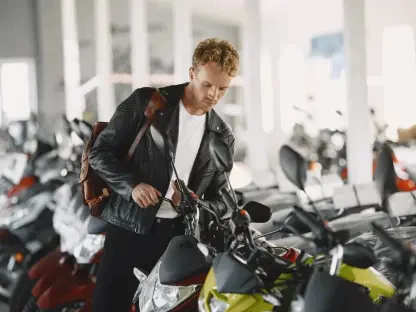One of the latest trends in e-commerce is the implementation of visual search and trust me on this one: you don’t want to be the business manager who ignores it. Nowadays, customers are increasingly relying on social media platforms like Pinterest, Instagram, and Facebook for style inspiration, advice and trend updates. The implementation of this technology has already delivered promising results, especially for home decor and fashion retailers, but others may benefit too. Here’s why.
What Is Visual Search and Why Retailers Benefit from It
Visual search, also called visual similarity search or image-based search, enables consumers to use real-world images, like screenshots and photographs, to initiate a search. It uses artificial intelligence (AI), machine learning and computer vision technology to recognize patterns in an image and match them to patterns saved in the algorithm’s memory.
In contrast to text-based search, when the user searches for an image by describing it with words or tags, in visual search the user snaps an image and uploads it to the mobile application or website. Then, the system scrutinizes the inventory by analyzing shapes, colors, and patterns in order to return results that are visually similar to the reference image.
Image-based search has a huge potential for increasing transactions, making life easier for both retailers and customers by showing a variety of recommendations that results in cross-selling and personalized shopping experiences. Visual recognition provides a solution to this, based on algorithms that analyze images and help optimize tasks such as identifying, tagging and classifying every product, thus making things easier for both customers and retailers. To put it simply, visual search is a more efficient process for retailers and more intuitive for consumers.
Optimizing your website for visual search
Businesses are constantly changing their strategies and services, trying to keep up with the customers’ behaviors and needs. Staying ahead of the competition means being able to adapt, transform, and diversify, and that includes optimizing your online shop for visual search.
Optimizing your website for visual search should include several steps like adding descriptive and relevant alt-text to images, using high-quality images, submitting images in the sitemap to help crawlers access them, applying schema markup to images.
Right now, the top visual search platforms are Pinterest, Google, Instagram, Amazon, and Bing. A company that sells home decor or fashion, should optimize its products to be displayed in Amazon or Pinterest. On the other hand, Google is the industry leader in understanding places, animals, plants, books and much more.
The Three Main Benefits of Image-Based Search in Fashion E-Commerce
Shoppable items directly from magazines and print ads
Scanning QR codes, looking up links manually or searching a brand name manually are now things of the past. With the help of image recognition technology, customers can now upload pictures taken from fashion magazines or print ads and instantly land on the items’ product pages. Moreover, in a blink of an eye, shoppers can search for similar products in the catalog, without having to wander through endless sub-categories to find the perfect match.
Automated tagging or categorizing – saving time and money
One of the main features of automated visual recognition in fashion is pre-categorizing all clothing items, thus saving time and money. Tags or categories can automatically be assigned to the product images uploaded in the system, an incredibly useful feature given the arrival of new seasonal trends.
Similar pieces of clothing at a lower price
Do you find that red Valentino dress everybody is talking about too expensive? With the help of visual similarity search, retailers can suggest similar-looking items in different price ranges, so customers can buy look-alike products at much lower prices.
How Samsung and Google Stepped into the Game
As e-commerce platforms become an increasingly competitive avenue for fashion sales, visual search offers premium placement to brands and could become an effective differentiator for both discovery and conversion, according to South Korean technology giant Samsung. Recently, Samsung teamed up with Zalora at its Fashion Festival to showcase how Bixby Vision Shopping can allow people to snap a picture and immediately search for a similar style directly through the camera app.
“For brands, they know that people are likely to be more than curious about the result, possibly wanting to make a purchase. This makes the image-based search a valued marketing channel, and Bixby Vision Shopping is a compelling feature, and something we can combine with Samsung’s other digital and retail channels to extend partner brand reach to millions across the region”, according to Christopher Tarr, the director of mobile customer experience and monetization at Samsung.
Google is taking its visual search a step further with a new feature called “style ideas.” Consumers can already use Google Lens to get similar item suggestions when looking for clothing and home decor, but the new feature offers its users outfit inspiration with style ideas from around the internet.
Style ideas won’t only give you inspiration on how to wear the clothing you search for through Google Lens. It “can also show you new ways to style clothes you already own. Give new life to that old sweater you haven’t picked up in a year—simply point Lens at it to see how others have worn a similar one and find pieces that might match it,” explains Kelly Schaefer, Product Manager at Google Lens.
The race to convert browsers into buyers means adopting solutions that have been designed to boost conversion rates, improve customer experience and catalog management. With our lives being more visual than ever, retailers are carefully curating themselves online to stay ahead of the game.









